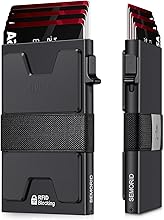
Mounties starting to lean on deterrence methods over force, new report says
CBC
RCMP officers' use of physical force and threats of force hit a record level in 2020 — but the numbers also suggest Mounties are slowly adopting deterrence methods, such as drawing a weapon without firing.
The RCMP recently released its latest breakdown of what it calls "police intervention methods," a term covering any instance of an RCMP officer touching a member of the public or brandishing a weapon.
While the RCMP says the vast majority of its interactions with the public end peacefully, Mounties used "police intervention options" 4,840 times in 2020 — the highest annual number since 2012.
For the second year in a row, cases in which Mounties used deterrence methods — such as pointing pepper spray at a subject without using it — outnumbered those involving the use of force. The RCMP said it expects to see that trend grow in the coming years.
"There's been a big focus on de-escalation within the organization," said Simon Baldwin, manager of the operational research unit at RCMP national headquarters.
"I'd like to think that that's the work in the training that's kind of paying off and reducing use of force overall. But I think it's also, with the use of different intervention options, there's a lot of effectiveness in using it as a deterrent."
The RCMP — which provides contract policing in all three territories and most provinces — has been under pressure to account for its use of force after a number of high-profile cases, including the arrest of Athabasca Chipewyan Chief Allan Adam and the 2020 killing of Rodney Levi, a member of the Metepenagiag First Nation in New Brunswick.
The report covers 2020 but was only released in early 2022. It does not cover the RCMP's role in the recent Ottawa protest occupation, one of the largest police operations in Canadian history.
Drawing a firearm remained Mounties' most common deterrence method in 2020. RCMP officers drew and displayed or pointed a firearm at a member of the public without firing 3,315 times that year.
"Overall, that's still a very limited number of early interactions with the public," said Cpl. Nick Widdershoven of the RCMP's national police intervention unit.
"We have our training set around when it is appropriate for a firearm to be drawn … we're talking about very high-risk situations."
University of Toronto sociology professor Akwasi Owusu-Bempah, a special adviser to the Canadian Civil Liberties Association, said brandishing weapons still comes with risk.
"When weapons are present, and certainly when they're drawn, there is the potential for them to be used," he said.
"I do have concerns, of course, when weapons are present, and weapons are drawn. I think it'd be important as well to acknowledge we are having conversations in this country around use of force and certainly police killings," he added, pointing out that Black and Indigenous people tend to be "greatly overrepresented" among targets for police use of force.





















 Run 3 Space | Play Space Running Game
Run 3 Space | Play Space Running Game Traffic Jam 3D | Online Racing Game
Traffic Jam 3D | Online Racing Game Duck Hunt | Play Old Classic Game
Duck Hunt | Play Old Classic Game











